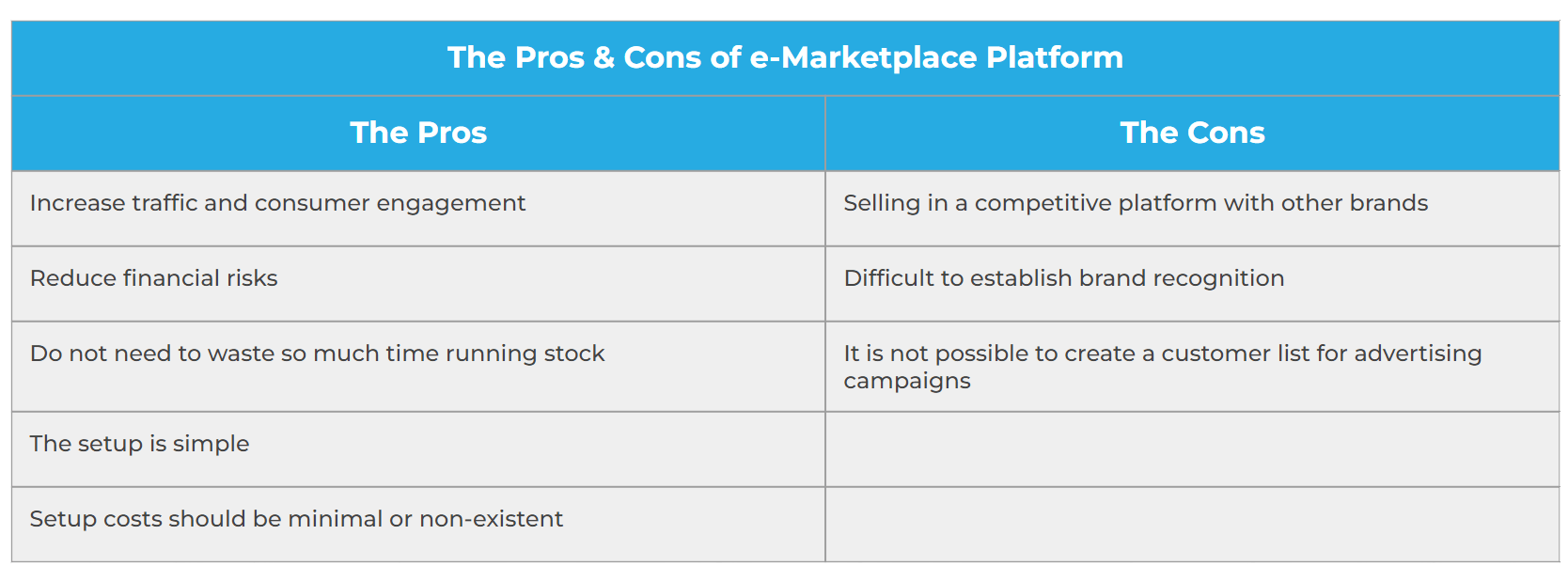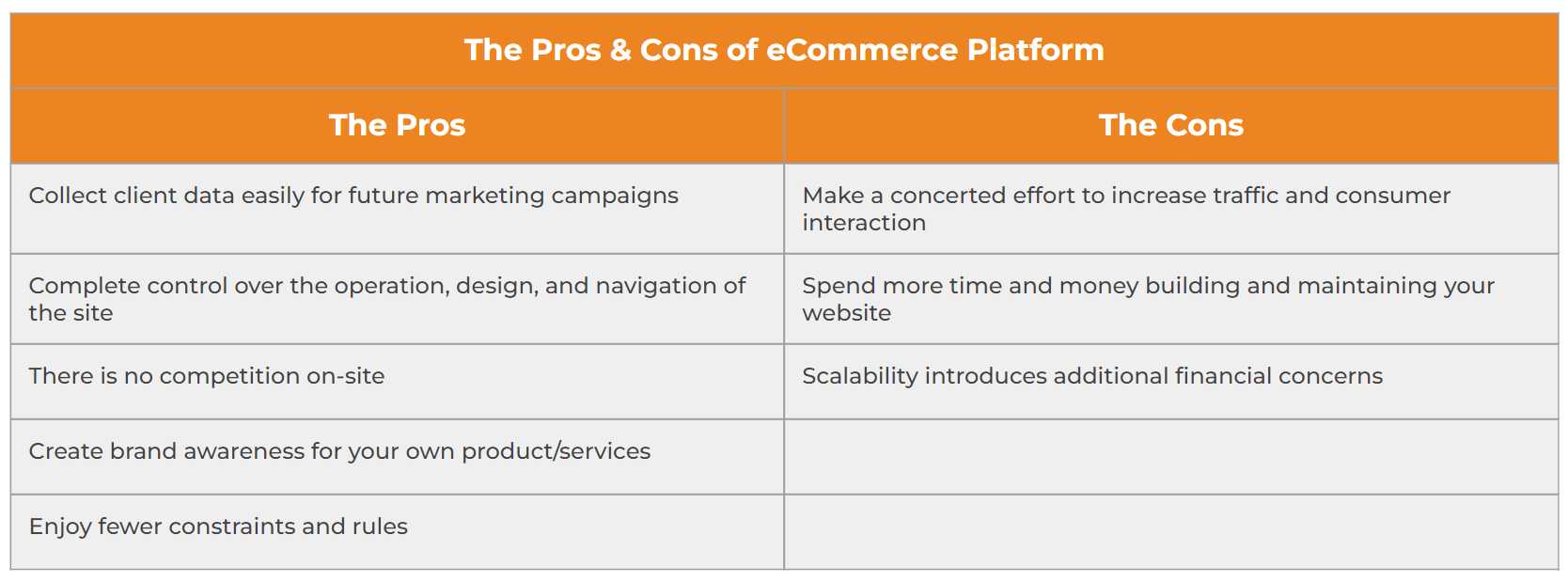What Is E-Marketplace Management?
An eCommerce marketplace is a third-party platform where various individuals or businesses sell a product or service.
A marketplace online is an e-commerce portal that links merchants and buyers. It’s sometimes referred to as an electronic marketplace, and the website’s proprietor handles all transactions. Companies utilize internet marketplaces to connect with clients who wish to buy their goods and services.
Types of E-Marketplace Management
There are numerous sorts of e-marketplaces based on various business concepts. They can be roughly classified based on how they are used.
1. Independent e-marketplace
An autonomous e-marketplace is typically a third-party business-to-business internet platform open to buyers and sellers in a specific industry. You can view classified advertising or your industry requests for quotations or bids by registering on an independent e-marketplace. Typically, some payments will be required to participate.
2. Buyer-oriented e-marketplace
A buyer consortium typically operates a purchaser’s e-marketplace to create an efficient buying atmosphere. If you want to buy something, using an e-marketplace can help you cut administrative costs and get the best price from vendors. As a supplier, you can use a buyer-oriented e-marketplace for advertising your catalog to a group of eligible buyers.
3. Supplier-oriented e-marketplace
This marketplace, also known as a provider directory, is set up and run by a group of suppliers that want to develop an effective sales channel to a large number of buyers over the internet. They are typically accessible by the goods or services provided.
Buyers benefit from supplier directories because they provide information about suppliers in markets and locations they are unfamiliar with. These marketplaces can help sellers enhance their visibility to potential consumers and generate leads.
4. Vertical and horizontal e-marketplaces
Vertical e-marketplaces give businesses online access to every segment of a specific industry sector, such as automobile, chemicals, architecture, or textile. Using a vertical e-marketplace for a particular piece to buy or sell can boost your efficiency levels and assist in decreasing supply chain costs, inventories, and procurement-cycle time.
A horizontal e-marketplace brings together buyers and sellers from various industries or areas. For example, a horizontal e-marketplace can be used to buy goods such as office supplies or stationery indirectly.
Marketplace vs eCommerce Platform
To begin, eCommerce refers to acquiring and selling operations over the Internet. On the other hand, an eCommerce platform is an end-to-end software application where both sides, sellers and customers, may come and perform their roles. eCommerce website builders, inventory tracking management systems, and customer support architecture are part of this service. Most essential, a consumer should be allowed to use an e-commerce platform to explore things, use a cart to shop around, and then check out.


Advantages of Selling In A Marketplace
1. Improved visibility and placement
eCommerce enterprises can advertise their products to a considerably wider number of potential buyers using marketplaces. Amazon Prime, for example, has over 100 million subscribers. However, acquiring this reach through an eCommerce site is more complex, as it would necessitate ongoing investment in online advertising, marketing efforts, and positioning.
But on the other arm, the marketplace you select must always have vital search engine placement because in their best interests to appeal to sellers and end customers. Therefore, as a result of your keywords and their placement job, it will be easier for your goods to appear on the first page of Google.
2. Cost-cutting in eCommerce
For an offer on a Marketplace, you must satisfy their criteria, fill out the product descriptions, and pay each site’s monthly charges or sales commissions. As a result, businesses will save money on infrastructure creation. The same is true for logistics, as there are markets that promise to handle logistics for you, such as Amazon’s FBA system or drop shipping services. As a result, the brand can enhance its earnings by not having to pay shipping and distribution charges for its items.
Around the same time, you can save cash on banking fees because the marketplace handles payment administration. Customers pay the marketplace straight on most networks, and the market delivers the eCommerce firm subsequently.
3. Make contact with your intended audience.
It would be best if you did not only examine the large, broad marketplace. Also, there are manufacturing or expert websites for various topics where you can quickly contact your customer persona. Treatwell, providing beauty and health care services, and Etsy, for the selling of handmade or decorative things, are two examples.
Disadvantages of Selling In A Marketplace
1. There is more competition
Your competitors are brought closer to you via the marketplaces. People can look at products from many sellers on these websites before making a final purchase. In the instance of Amazon, the marketplace itself is a competitor.
At the same time, a more competitive market implies more volatile prices. eCommerce companies utilize dynamic pricing to grab users’ attention and constantly react to changes in demand and competitors’ rates. As a result, if you want to be a viable alternative for customers, you must continually analyze and adjust your prices.
2. Risk of a brand’s reputation diminishes
Because they trust the marketplace, many users are unaware of the company from which they purchase a product. They are simply looking for an item with price and features that fit their requirements, which harms the eCommerce brand image and traffic to their online store. Furthermore, if you give up control of the logistics in a marketplace, the delivery would be sent using the marketplace’s packaging rather than your own.
3. You must follow the regulations of the market
Your sales strategies are limited to what the rules allow on these sites. You must adhere to guidelines when advertising your items with text and photos. You must also follow the general terms and conditions that apply to all merchants. This involves dealing with sales commissions, which can be hefty and cut your profit margin.
In this scenario, eCommerce enterprises who wish to sell on a marketplace can use automated solutions to address difficulties and boost the profitability of their investment. For example, to increase sales, use automatic repricing software to alter your prices based on demand and your competitors’ prices.
Final Thoughts of Marketplace vs. eCommerce
The best site to sell online will differ depending on each shop’s product niches, demands, and ambitions. However, online marketplaces are an excellent place to start for eCommerce newbies since they allow you to reduce the upfront expenses, risks, and time required to set up a business.
Otherwise, if you already have a well-known brand and do not want to split your profits with a community, or if you require a custom-made solution, creating your eCommerce website may be the way to go. eCommerce or an online market is the best location to trade, but it isn’t your only option when you can use both to help your business develop.

